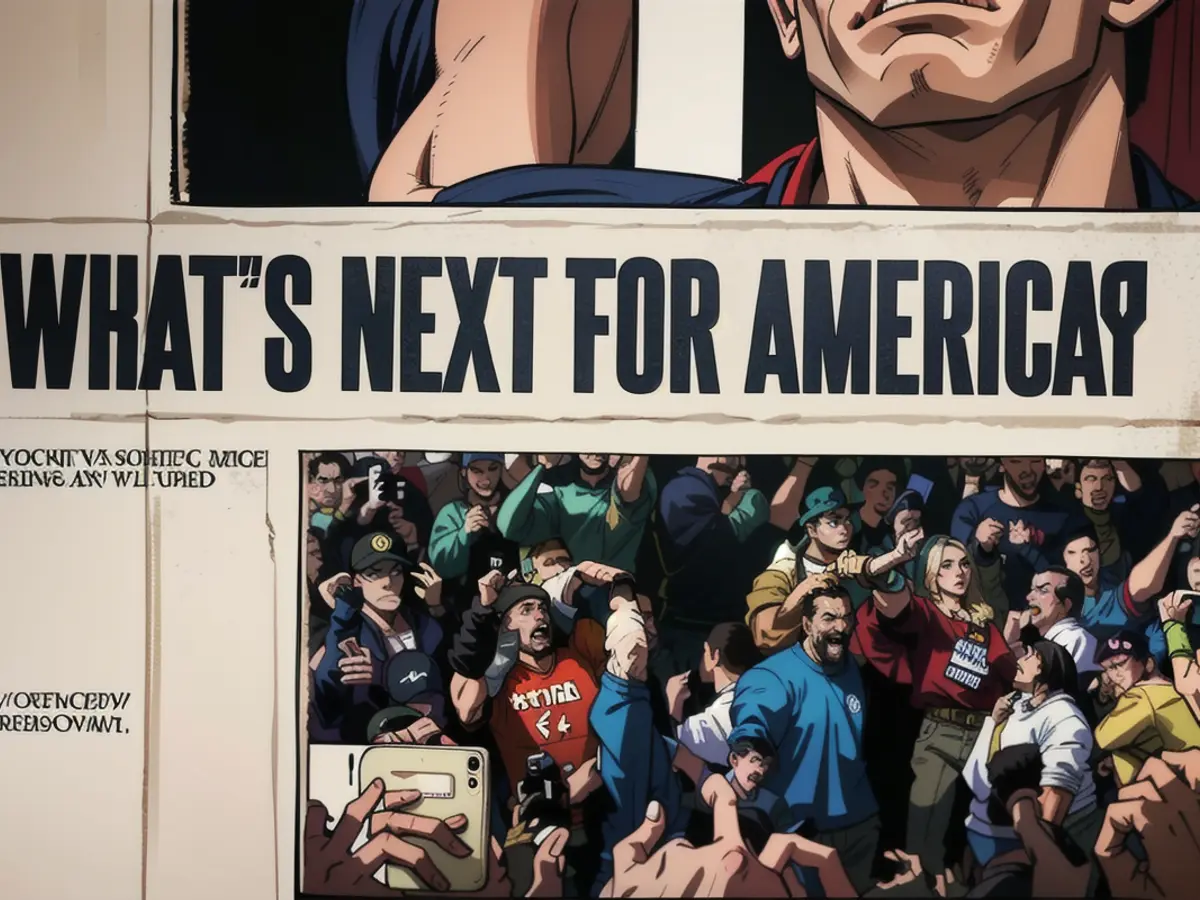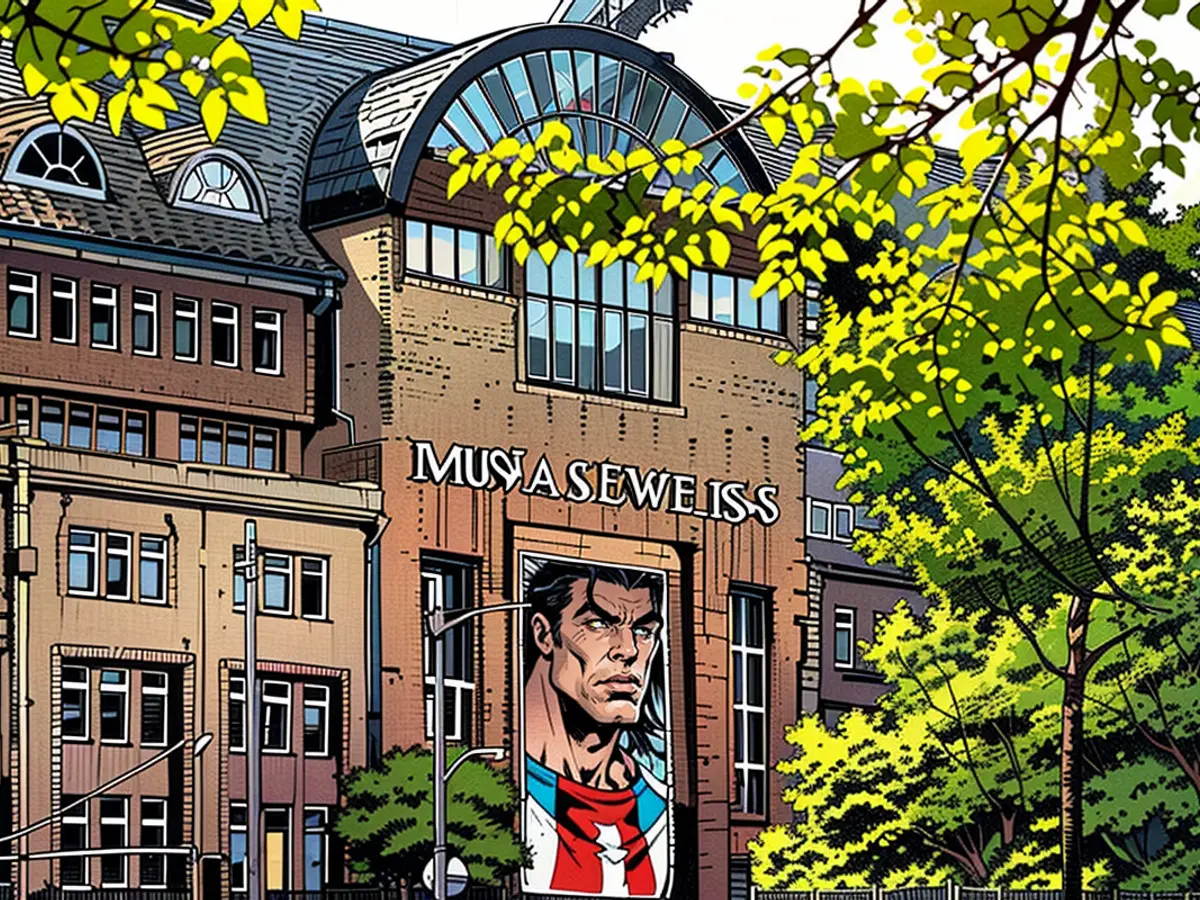Trump's "unified Reich" video seems to stem from a Turkish graphic designer.
A video shared by the Trump campaign earlier this week depicted imagined headlines potential newspapers might run if former President Donald Trump is reelected. One of these headlines read, "What's next for America?" with a fabricated article beneath it featuring language often associated with Nazi Germany, like the words "creation of a unified Reich."
President Joe Biden spoke out against this reference, while the Trump team claimed they didn't create the video—it was shared by a staffer who failed to spot the offensive text.
Interestingly, it seems the source of the fake article's text traces back to Enes Şimşek, a graphic designer living near Istanbul. In a conversation with CNN, Şimşek explained how the Trump ad may have been derived from video graphics he designed in May of the previous year. These graphics were created to allow customers to construct something similar to an old-fashioned newsreel. Şimşek claimed he simply searched Google for World War I-related text and incorporated it into his template, which was intended to be replaceable by the customer. He estimates he's sold 16 copies of his template for $21 apiece.
The phrase surrounding "creation of a unified Reich" traces its roots to a Wikipedia entry on World War I, added on November 15, 2022, and later removed due to the lack of Nazi Germany reference. According to Wikipedia's logs, the entry was created prior to its appearance in the Trump video. The text has turned out to be placeholder language that was supposed to be replaced by the customer using the template. However, Şimşek believes the Trump video retained his original template.
Outside of the Trump video, this fake newspaper article has also appeared in at least two other online videos. One is a French-language video posted to Facebook containing the dummy text, and the other is a music video on YouTube—both seem to lack any political context.
CNN managed to locate the video template on Video Hive, a platform where designers sell their motion graphics creations. After being contacted via the template's contact form, Şimşek admitted his involvement.
"I didn't know it's my power to change politics... I don't know what could be crazier than that," remarked Şimşek during a video call. "Imagine if your work shakes a country."
A web cache reveals the template dates back at least a year, long before the Trump ad surfaced online.
What is a video template?
In video production, creators frequently turn to online stores for pre-made templates to use as a starting point for their projects. They usually pay a fee to the designer for access to these templates.
Motion graphics templates, as described by Bill Byrne, a motion graphics designer and Lecturer of Arts and Entertainment Technologies at the University of Texas at Austin, are a convenient tool in video creation.
"Templates are designed to streamline the process and to do it swiftly and affordably," said Byrne.
The presence of the initially placed text in the final video is likely a mistake by the video's creator, as stated by Byrne. "It's unfortunate," he added.
Confusion from the designer
Based in Istanbul, Şimşek was at his desk when he came across the news about his work causing chaos in American politics—a country he's never even visited.
Stunned by the usage of his work in politics, Şimşek made an attempt to rectify the situation. Through an email shared with CNN, he sent a message to [email protected] with the subject line "From the 'REICH' video template Author."
"Hi. I am the original author of that 'REICH' video template. If you need an official statement, just let me know," wrote Şimşek. He didn't receive a response.
Şimşek was further stunned when he saw Biden commenting on the Trump video.
When asked what his message to Biden about Trump's video would be, he said, "This isn't his fault."
"And also, I am Enes," he continued. "I want to come to America."
Şimşek mentioned that Envato, the marketplace hosting the template, instructed him to remove the "unified Reich" phrase from the template or face its deletion. He complied and followed up with a blog post further explaining the situation. Envato did not respond to a request for comment.
"When I was doing this job, I never thought such an event would happen," concluded Şimşek. "By the way, thank you to Trump for choosing my template."
Trump has made references to Nazi imagery in the past, such as using the phrase "poisoning the blood of our country" while discussing immigrants, which resembles a statement from Adolf Hitler's book, Mein Kampf.
Reports claim that Trump once praised Hitler, as claimed by former White House Chief of Staff John Kelly. Kelly mentioned this in a new book "The Return of Great Powers," stating, "He said, 'Well, but Hitler did some good things.' I said, 'Well, what?', and he replied, 'Well, (Hitler) rebuilt the economy." Trump has denied these allegations, asserting that the conversation never took place.
Critics believe the inclusion of the "unified Reich" phrase in a recent video released by Trump's campaign was deliberate, intended as a hidden message.
The Trump campaign did not provide a direct response when questioned about the origins of the "unified Reich" language in the video, instead repeating an earlier statement that the video was reposted by a staffer without seeing the word. The staffer was not identified.
The Biden campaign, meanwhile, viewed this as part of a series of worrying remarks by Trump. "This week's video is part of a pattern and reflects Donald Trump's values and embrace of white supremacists and antisemitism. He does so repeatedly, explicitly, and with overwhelming clarity. Suggesting otherwise or excusing his behavior only helps him spread hate," said James Singer, a Biden campaign spokesperson.
The original source of the video was from an anonymous pro-Trump meme account on X, under the alias @ramble_rants, according to the Bulwark. The Dilley Meme Team, a group of pro-Trump meme creators, including @ramble_rants, did not reply to a request for comment.
Şimşek, the man behind the video, expressed his love for all Americans and asked people to calm down, stating, "I love all the American people. And please calm down. This is just a template. And, also, I’m not a Nazi."
CNN's Max Saltman contributed to this report.

Read also:
- Lack of snow also opens up new opportunities for winter tourism
- Abrupt end to e-car subsidies
- The chemical industry has little confidence
- Intersport boss hopes for sales boom through sporting events
Source: edition.cnn.com








